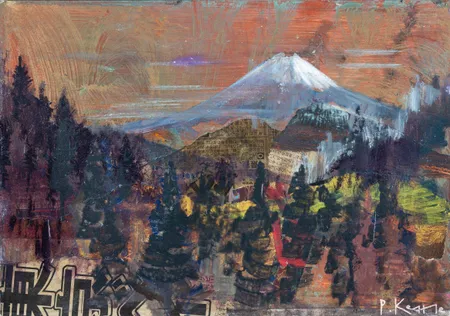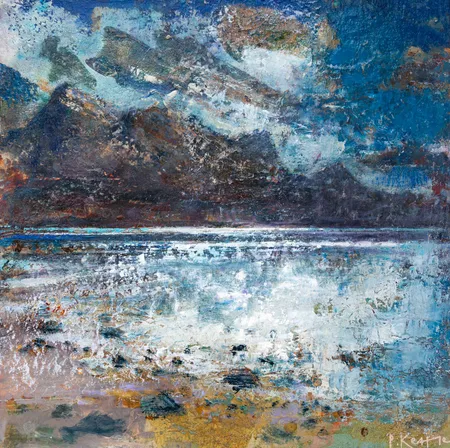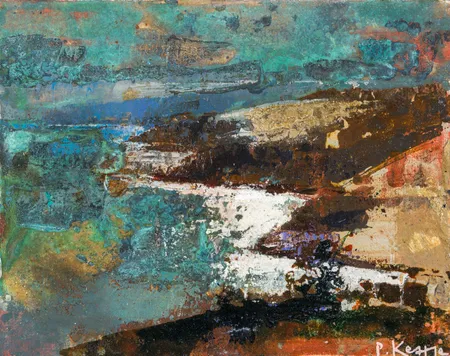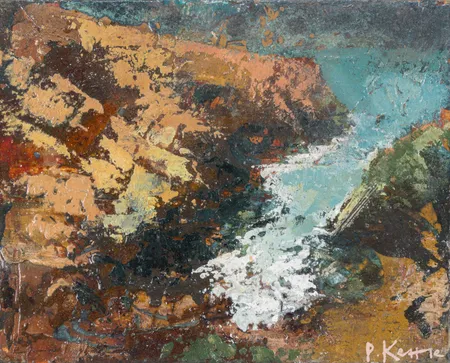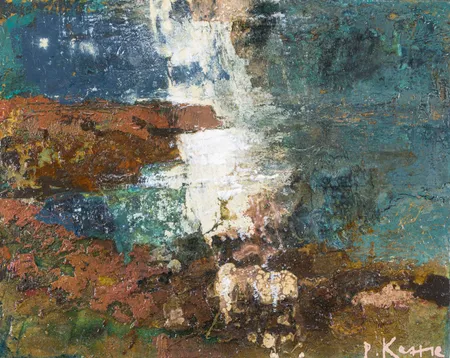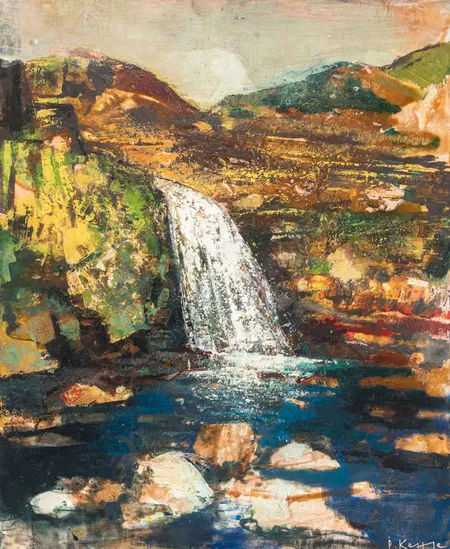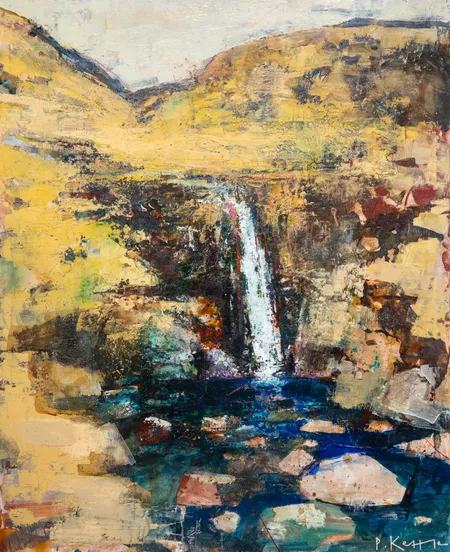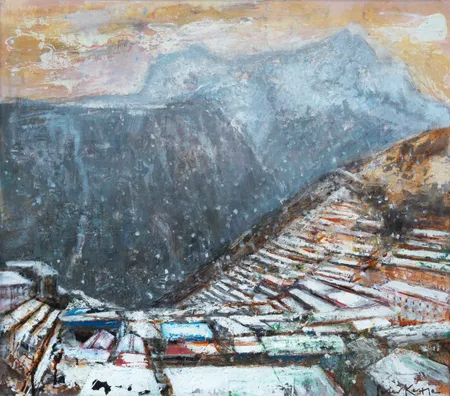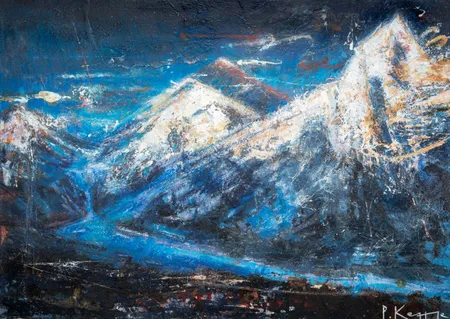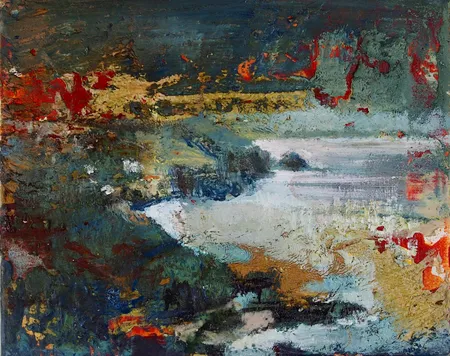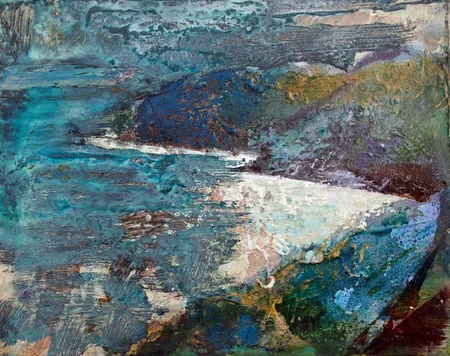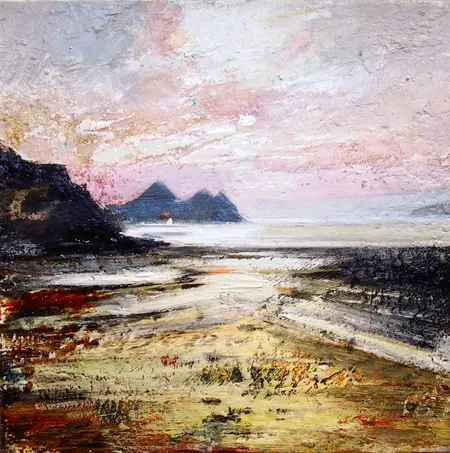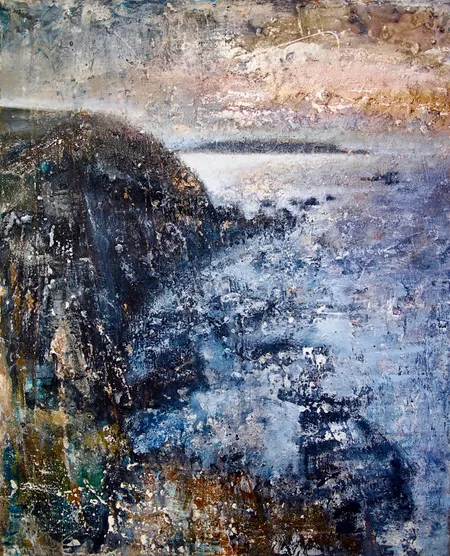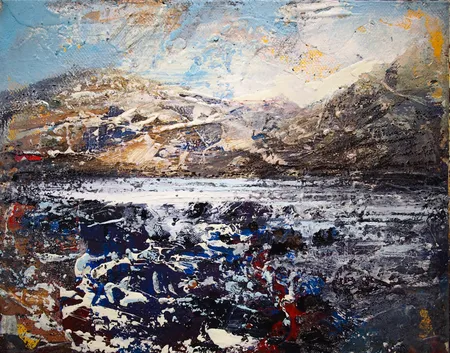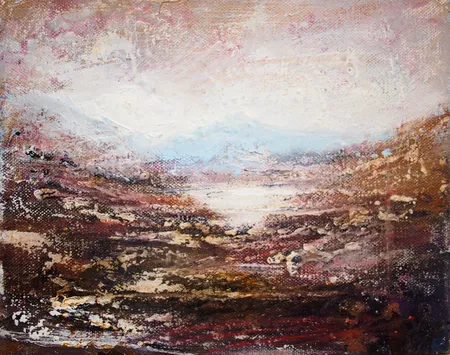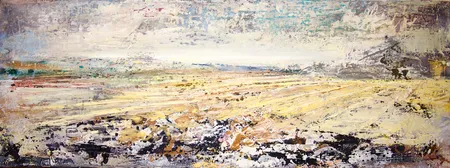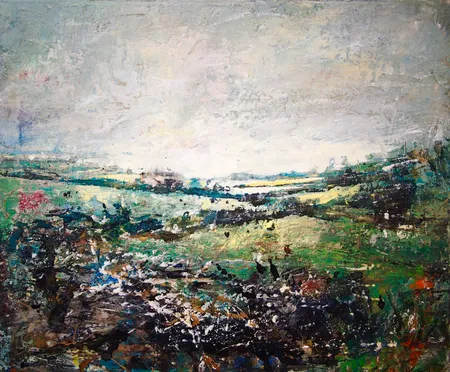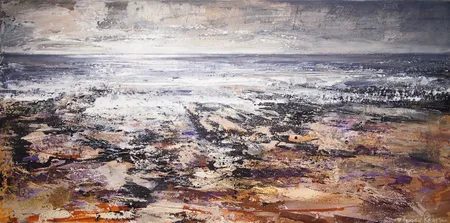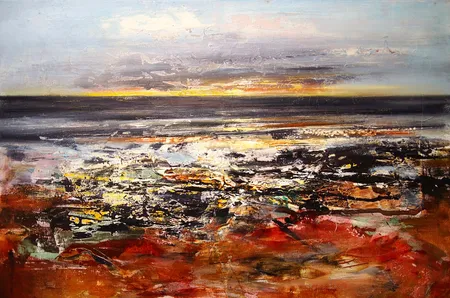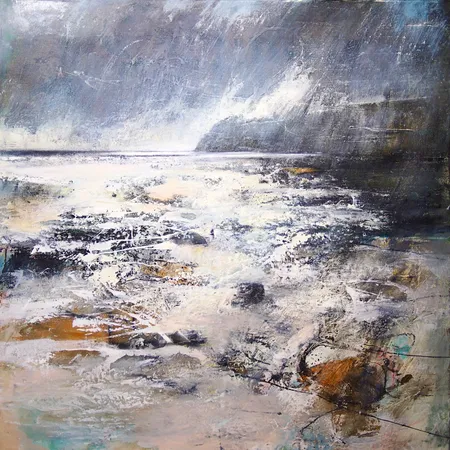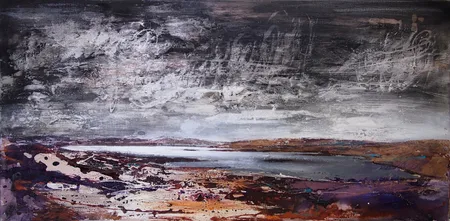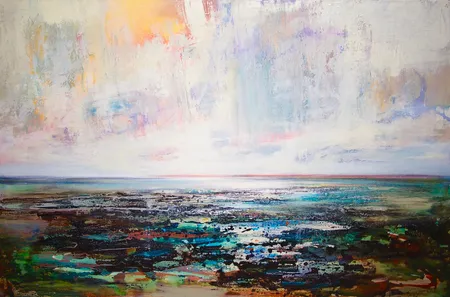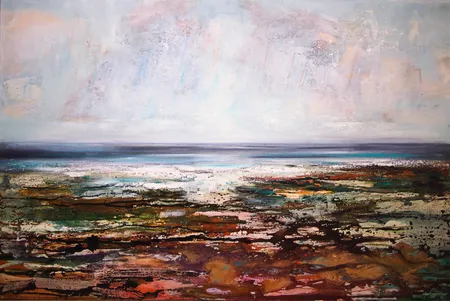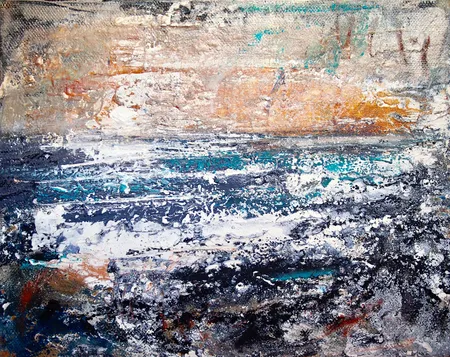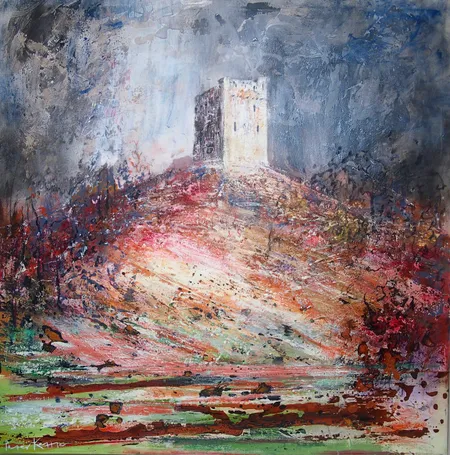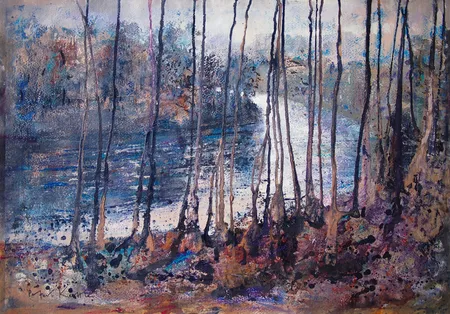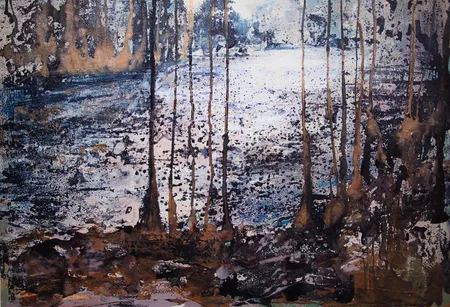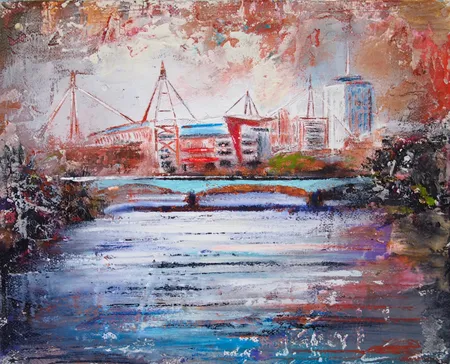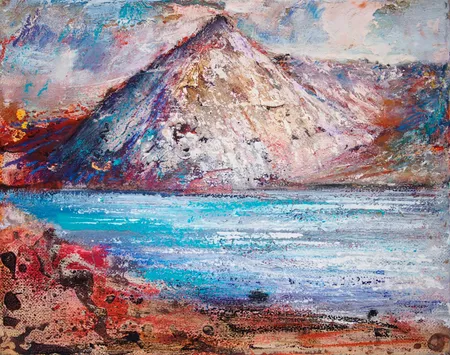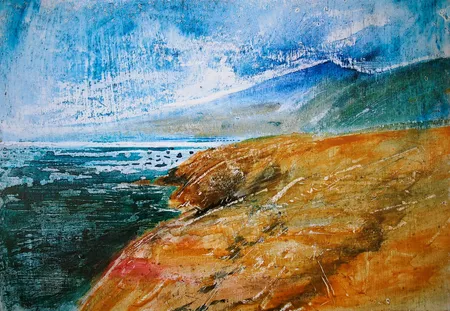Peter Kettle
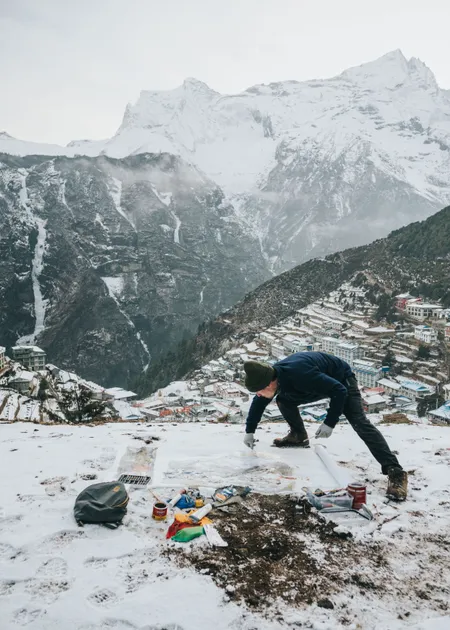
Graduation Year: 2023
New Blood Art Commentary
Kettle’s work has the surfaces of well-worn exterior walls, buffeted and corroded with the appearance of having withstood the effects of time and weather – a technique that gives his work an enlivening combination of stoicism and nostalgia.
If one glanced at Kettle’s work for a matter of seconds, it might seem abstract. Quickly, however, a landscape unfolds. A deep green often streaks across the top of the canvas. The implication is the ocean or a night sky, either seems applicable. Look further and we might detect a sort of dance. Each painting has its own internal rhythm. Paint is smeared across the canvas, the trace of a palette knife or similar instrument visible. Drips, drags and smears give the painting body. No wonder Kettle has titled his recent paintings as a sequence of sea shanties. The paintings act as placeholders for songs, for shanties. Human bodies are absent and the paintings are stronger for it; they embody the aftermath of the party, the event, the song. Here, we might draw a comparison with Giorgio De Chirico’s cities, made all the stranger by the lack of human presence. And lastly, a note on Kettle himself. A keen mountaineer and traveller, his artist photo depicts him setting out camping equipment on a snowy mountain. We see a backpack and beside it, three small packages in red, yellow and green. Look at the paintings and these three colours clustered together are a constant. Another trace of human activity, in this case, likely Kettle himself.
Artist Statement
"Peter creates paintings by immersing himself in the landscape. He builds his work around planned journeys around his native Wales, and more recently, exploring the remotest regions of Patagonia 2017, a challenging expedition to Everest Basecamp 2019 and more recently Japan 2023. Peter records colour, texture and weather elements in enpleinair paintings in sketches and on large canvas. Back in his studio he will work these studies up into ambitiously scaled, expressive landscape paintings, using paint and other media poured, rubbed and splashed onto the canvas. Having worked exclusively in oils, his technique has broadened to incorporate the use of French Chalk and Shellac with oil giving his paintings the impression of well-worn exterior walls, buffeted and corroded over time. The effect is a characterful, well weathered surface, stony and granular that is at the same time luminous with dramatic light.
In April 2019, Peter Kettle collected litter throughout a 14 day climb to Basecamp, Everest, to be recycled into enpleinair Oil and Collage paintings. With a large canvas roll strapped to his back, the aim of the project was to evocatively present and honour the landscape artistically, but also draw attention to concerns regarding waste management in the Himalayas. Kettle has since gathered the smaller field paintings and sketches to explore an abstract expressionist response to his experience. Large scale canvas work fill the collection with towering snow-capped peaks, winding valleys and vistas over gilded Stupa’s (buddhist prayer statue). The collection brings together a documentary, and an expression, of an expedition of mettle and art to the worlds tallest cathedral - Mt. Everest.
In 2014 he was elected as a Fellow of the Royal Society of Arts (FRSA) and the Royal Cambrian Academy (RCA) He was identified as 'One to Watch' by Moneyweek Magazine in the same year and in The Guardian in 2017. Peter Kettle is certainly an exciting young talent on the rise in contemporary landscape painting. He has made works of the Port Talbot Steelworks, The Taff Railway Trial to the Brecon Beacons (marking the coal transport route and source of the River Taff) and North Wales Slate Industry.
In 2018, Peter turned his attention to Patagonia, and spent 4 weeks retracing the steps of the Welsh Settlers Voyage. He also payed homage to Kyffin Williams trip to Trevelin in Patagonia 50 years ago to this year. Peter is growing into an international and investable artist, with pieces held in public and private collections worldwide. "

